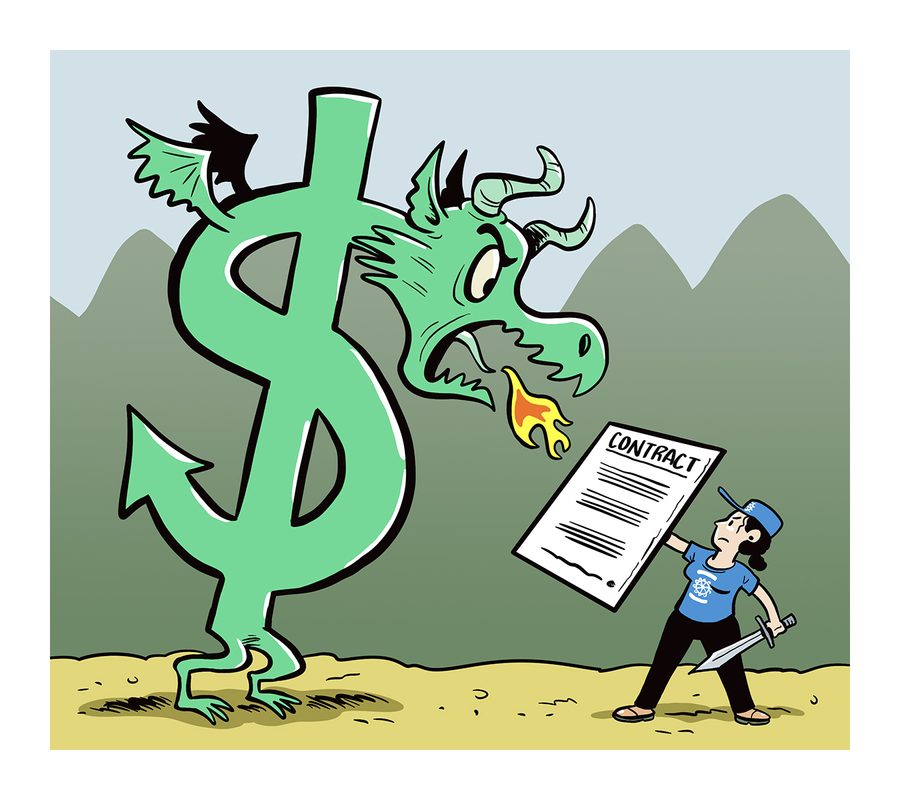One Simple Trick to Protect Workers from Inflation
Union contracts could ensure economic stability among the working class amid inflation.
Hamilton Nolan

Inflation is an economic phenomenon whose nuances remain a mystery even to economists. That hasn’t stopped politicians from wielding it as a weapon to villainize anyone they wish, from environmentalists (blamed for rising gas prices) to annoying outsiders (condemned for driving up housing costs). In reality, we know one group will always pay the price for inflation and bear the burden of increasing costs: working people.
Yet the most important practical tool for protecting workers from the ravages
of inflation — unionization— is almost totally absent from today’s panicked political dialogue.
In the same way that seemingly every foreign war is compared with World War II, every bout of high inflation in America triggers immediate comparison to the late 1970s. (Our national historical knowledge does not run very deep.) If you lived through that traumatizing economic period, you may remember long gas lines and the ensuing super-high interest rates. What you may not remember is that a large portion of Americans had a shield against inflation that few have today: a union contract.
Rather than allowing the increasingly frantic tenor of inflation rhetoric to drive us toward typical penurious solutions paid for by the poor and middle class, we should instead be talking about how to expand unionization to ensure that when the price of everything rises, so do wages.
Cost-of-living increases are a staple of union contracts. Good contracts, in fact, can peg those annual increases directly to the rate of inflation, so the money you make each year will buy you the same amount of stuff. In the late 1970s and early 1980s, as inflation fears were at their most drastic, well over 20% of American workers were union members, compared with just over 10% today. Far fewer workers now have the ability to ensure that their wages are adjusted up with inflation each year. Research shows that high rates of unionization can also set industry standards that raise wages even for nonunion workers, so the losses for workers today go far beyond the direct decline in union membership. Inflation is like a flood that always shows up eventually. Union contracts are a boat to ride it out. Today, a lot more people are going to drown.
The federal minimum wage has been stuck at $7.25 since 2009. Since the 1970s, vital areas like housing have seen price increases well above the inflation rate. The post-pandemic demand for labor has raised wages — but not enough to keep up with inflation. Without a contract, workers are just left to pray that the market’s gyrations will favor them.
The past 50 years of rising inequality shows this path is not wise.
Free market zealots like to raise the scary prospect of a “wage-price spiral,” in which rising prices and rising wages feed off one another to push inflation ever higher. That sort of Econ 101 thinking is not backed up by reality. Most periods of inflation since WWII did not see such a spiral, even when union density was far higher than today. And one of the side effects of today’s thoroughly globalized economy is that it’s now harder for companies to raise prices, even when their labor costs go up.
Wider unionization would allow workers to redirect money out of the pockets
of the investor class — a step towards ensuring that not every last macroeconomic risk gets dumped on working people, who can least afford it. It would also — and I know this is a wild idea — force policymakers to address the root causes of rising prices.
Where is inflation actually coming from? Since 2000, three of the areas in the Consumer Price Index with the biggest price increases have been energy, healthcare, and college costs. The policies that would best address these economic threats are, in order, clean energy investment, Medicare for All, and more funding for higher education. In a more rational world, inflation could serve as a sharp, pointy stick to prod our nation down a more progressive path.
But capital’s preferred solution will always be to just take the cost of inflation from labor’s side of the ledger. We won’t win this battle with polite appeals to logic and decency. We will only win by giving many, many more people union contracts, along with those sweet cost-of-living increase guarantees.
In practical terms: To return to the kind of union density we had at the end of the 1970s, America needs to add well over 15 million new union members. How are we doing? In 2021, the number of union members declined by 241,000. There’s always next year!
Those numbers demonstrate exactly why the labor movement needs to start planning large-scale organizing in a concrete way, rather than talking about it as some utopian pipe dream. The first step is understanding that, no matter how hard large-scale organizing is, it is necessary.
Inflation is just one part of the class war, and it is very real. If we don’t figure out how to organize the workers, our corporate overlords will continue “solving” these problems as they wish.
Hamilton Nolan is a labor writer for In These Times. He has spent the past decade writing about labor and politics for Gawker, Splinter, The Guardian, and elsewhere. More of his work is on Substack.









